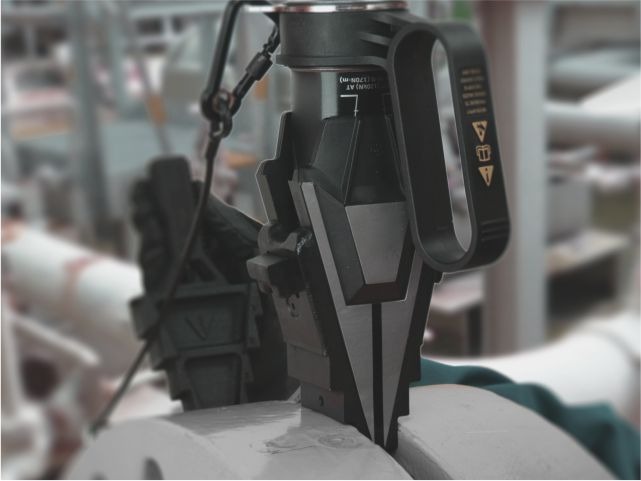Options for Flange Facing and How to Select One
Together with flange material and class, other crucial factors to take into account when choosing flanges include the facing type and finish. Your piping system might not fulfil the minimum criteria and experience leakage or failure if it lacks the proper face type and related alternatives. What impact do facing finish and type have on the functionality of flanges? For additional information, read this article on different flange facing kinds.
What Are the Most Common Flange Facing Types?
Raised Face Flange
The most typical style of flange facing is called raised face (RF), which has a gasket seating region that is raised significantly above the flange face—typically, by 1/16 inch for 300 flanges and Class 150 and by 1/4 inch for Class 400 to 2500 flanges. By reducing the surface space where the flange and the gasket touch, the raised face strengthens the seal. By biting into the gasket when tension is applied, the jagged flange face surface creates a tight seal.
Flat Face Flange
Because there is no ridge on the mating cover of flat face (FF) flanges and they are machined flat, the gasket makes full contact. Flat face flanges are typically utilized for applications involving relatively moderate pressures and low temperatures, typically for 150 to 300 psi rated flanges.
Ring-Type Joint
The Ring Type Joint flanges are frequently employed in high pressure (higher rating and Class 600) and high-temperature assistance above 427°C or 800°F applications. Their faces have been carved with grooves that house steel ring gaskets. When bolts are tightened, the gasket between the flanges is compressed into the grooves and deformed (or "coined") such that metal touches metal is sealed when the grooves are filled with the
gasket.
Raised Face height
With the exception of the Lap Joint flange, it is critical to comprehend and keep in mind the following when calculating the height measures H and B of any dimensions of flanges presented on this website.
The raised face is roughly 1.6 mm (1/16 inch) high in tension classes 300 and 150. The H and B measurements, including the increased face height, are displayed in practically every flange supplier's catalog or brochure for these two pressure classes.
How to Choose the Appropriate Flange Facing
While purchasing pipe flanges, connecting flanges need to be compatible. Flange face kinds should complement one another, for example, raised to raised and flat to flat. Pipe flange materials need to coordinate as well, coupling steel with steel or stainless steel with stainless steel. Moreover, the flange face needs to adhere to the application's specifications, such as AWWA or ANSI.
How to choose flange options
Here is how to choose flange options :
1. You must first become familiar with the bolting service procedures for your flange. The key challenge in this situation is to pick the appropriate flange rather than just relying on a raised face or flat face configuration slip-on as a default. It will ensure that you are able to keep your pipeline assembly from needing to undergo a hard renovation.
2. To safeguard your connections, you must research and pinpoint the important information about your flange. You may find and choose the appropriate flange material and shape for your bolting service in this manner. When you fully understand the media that is passing through your pipeline or vessel, you will eventually find it.
3. The next step is to decide which alloy type is best for your project. You must decide which material qualities you want as the majority of these goods frequently use a variety of materials. You can choose from fibrous flange, elastomeric, metallic and non-metallic kinds.
4. The following step is to assess the flanges that will be installed in terms of their requirements for corrosion and chemical resistance. After your consideration of the materials, you must also comprehend the levels of chemical resistance that each alloy offers. It assures that you will follow the exact application requirements as necessary to meet the demands of your project.
5. Make sure to locate a specialist who can give you the best advice. By doing this, you can increase the functionality and safety of your flange options assembly. An experienced expert will provide you the details you require and work closely with you to apply the optimum fitting in the appropriate bolting service. You may check the performance of your whole assembly in a reliable manner by carrying out proper testing and reviewing your design calculations.
6. Choosing the right manufacturer is the next step. Choose the most dependable, renowned, and skilled manufacturer to give you the best flange you're looking for.
Conclusion
You should carefully evaluate your piping system's flange facing and finish. In addition to taking standards into account when choosing your flange features, finish and flange face, select your flange facing based on your temperature-pressure requirements.
Content Sources: - ABSGroup





Comments
Post a Comment